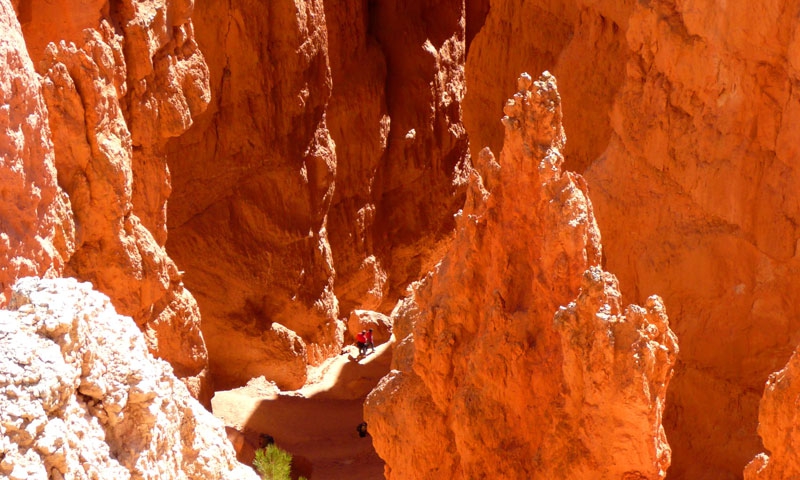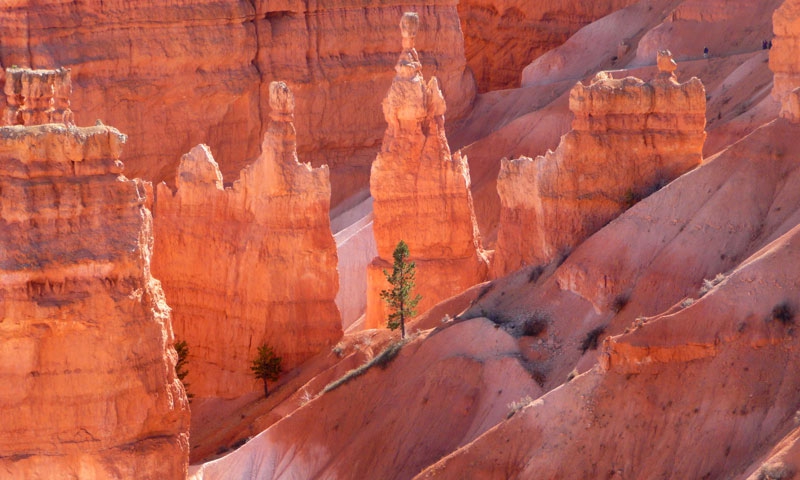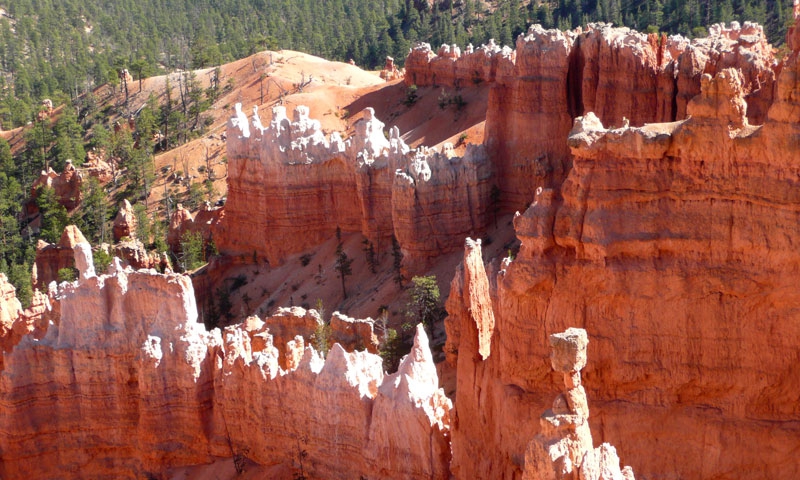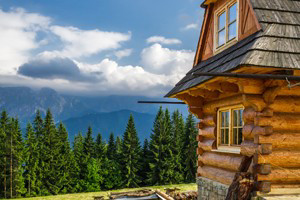According to Paiute Legend, Coyote created the red rock pillars of Bryce Canyon when he turned the "Legend People" to stone for their misbehavior. And of course, geologists use technical terms to describe them. Visitors simply call them “hoodoos”.
If you think that “hoodoo” sounds a lot like “voodoo”, there is a reason for that. Early geologists who explored the area of Bryce Canyon thought that the rock formations could cast a spell on you with their magical spires and towering arches. These towering rock formations are indeed unique in the entire world for their odd red rock spires and horseshoe-shaped amphitheaters.
At Bryce Canyon, you will observe eerie, grotesque, and often times whimsical appearing rock formations set aside ancient trees. These famous spires or “hoodoos” are formed when the combination of rainwater and ice wear away the weak limestone that is the basis of the rock formation. Hoodoos have a variable thickness whereas, other similar shapes, pinnacles and spires, do not. Hoodoos are often described as being shaped like a totem pole.
Hoodoos at Bryce Canyon range in size from around five foot tall to the height of a ten-story building. Formed in sedimentary rock, hoodoo shapes are affected by the erosion patterns of alternating hard and softer rock layers. The name given to the rock layer that forms hoodoos at Bryce Canyon is the Claron Formation and is predominately limestone.
Hoodoos are formed by two weathering processes that continuously work together. The extreme cold weather that is experienced in Bryce Canyon creates a weathering force known as frost wedging. Snow that melts and forms water, then freezes and expands by nearly 10% creates an ice wedge that pries open cracks in the limestone.
Rain also works as an erosive factor by removing the debris on the rock formations caused by the ice wedging and by wind driven rain. In the summer, monsoon type rainstorms travel through the Bryce Canyon region bringing short duration high intensity rain.
The best way to view the various rock formations, hoodoos, in Bryce Canyon is to hike one of the various trails that descend into the canyon. If you have limited time, your best bet is to take the Navajo Loop Trail. Along this trail, you will see slot canyons and a few of the hoodoos. If you have more time, you can add a hike along the Queen's Garden Trail.
For an unusual perspective of the hoodoos, take a full-moon hike. Another way to beat the crowds and still get a great view of Bryce Canyon is to come during the winter when the melting snow seems to enrich the colors of the hoodoos and the blanket of white snow adds additional dimensions to the surroundings.
Remember that hoodoos are susceptible to erosion and the very nature that forms them will also in short geological time destroy them. By just walking up to the base of a hoodoo, you can shorten its life span. Your tracks serve to weaken the clay slopes that form the hoodoo's foundation. Please stay on established trails when visiting Bryce Canyon National Park to ensure that erosion will not prematurely destroy the hoodoos.
Plan your trip to Bryce:
- Find a Place to Stay
- Browse Vacation Packages
- Take a Tour of the Park




